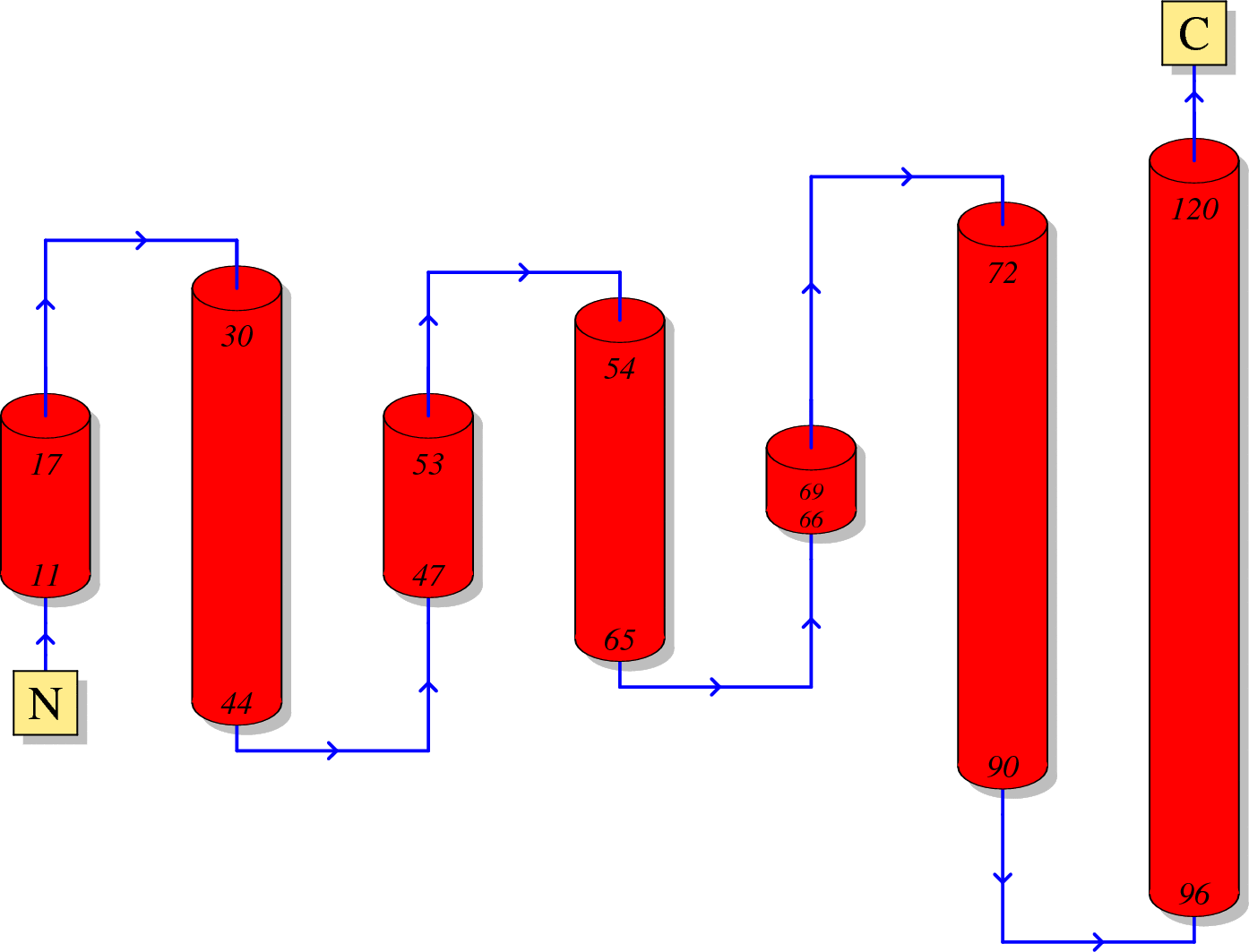Function of HIV Matrix
- HIV Matrix is a structural protein encoded by the gag gene, which provides the basic infrastructure of HIV particles. When cleaved from Gag polyprotein during viral maturation, Matrix proteins organize into ordered hexamers to build a structural layer beneath viral membrane, which protects the integrity of HIV particles [1].
- The matrix domain in the intact Gag polyprotein is destined to traffic Gag to the plasma membrane for viral budding and to recruit host factors (e.g. TIP47) [2]. Matrix anchors the lipid membrane through the myristoylated N-terminal domain which is critical for plasma membrane targeting and viral assembly [2].
- To prevent the nonspecific binding, Matrix in the Gag polyprotein binds to nucleic acids through a PIP2-dependent mechanism [1].
Reference
- Bell, N. M. & Lever, A. M. HIV Gag polyprotein: processing and early viral particle assembly. Trends in microbiology 21, 136-144, doi:10.1016/j.tim.2012.11.006 (2013). [PubMed Link]
- Waheed, A. A. & Freed, E. O. HIV type 1 Gag as a target for antiviral therapy. AIDS research and human retroviruses 28, 54-75, doi:10.1089/AID.2011.0230 (2012). [PubMed Link]
Sequence
(1) Reference sequence for HIV-1 Matrix
1 10 20 30 40 50
| | | | | |
MGARASVLSG GELDRWEKIR LRPGGKKKYK LKHIVWASRE LERFAVNPGL
51 60 70 80 90 100
| | | | | |
LETSEGCRQI LGQLQPSLQT GSEELRSLYN TVATLYCVHQ RIEIKDTKEA
101 110 120 130
| | | |
LDKIEEEQNK SKKKAQQAAA DTGHSNQVSQ NY (2) Reference sequence for HIV-2 and SIV Matrix
1 10 20 30 40 50
| | | | | |
MGVRNSVLSG KKADELEKIR LRPNGKKKYM LKHVVWAANE LDRFGLAESL
51 60 70 80 90 100
| | | | | |
LENKEGCQKI LSVLAPLVPT GSENLKSLYN TVCVIWCIHA EEKVKHTEEA
101 110 120 130
| | | |
KQIVQRHLVV ETGTTETMPK TSRPTAPSSG RGGNY (3) Coloring scheme for above amino acids
Amino acids with hydrophobic side chains (normally buried inside the protein core):
A - Ala - Alanine
I - Ile - Isoleucine
L - Leu - Leucine
M - Met - Methionine
V - Val - Valine
Amino acids with polar uncharged side chains (may participate in hydrogen bonds):
N - Asn - Asparagine
Q - Gln - Glutamine
S - Ser - Serine
T - Thr - Threonine
Amino acids with positive charged side chains:
H - His - Histidine
K - Lys - Lysine
R - Arg - Arginine
Amino acids with negative charged side chains:
D - Asp - Aspartic acid
E - Glu - Glutamic acid
Amino acids with aromatic side chains:
F - Phe - Phenylalanine
Y - Tyr - Tyrosine
W - Trp - Tryptophan
Cysteine: C - Cys - Cysteine
Glycine: G - Gly - Glycine
Proline: P - Pro - Proline
Amino acid variations at HIV-1 Matrix
Here, we visualize the prevalence of amino acid variations at the HIV-1 Matrix from HIV-1 subtype B.
Protocal of our sequence collection
For HIV-1 subtype B, one sequence per patient was extracted from HIV Los Alamos database (www.hiv.lanl.gov/).
We removed misclassified sequences or sequences with hypermutations, stop codons, ambiguous nucleotides, which were described in our article [1].
We removed sequences conferred partial or full resistance to any of the protease inhibitors, RT inhibitors and integrase inhibitors using HIVdb V6.0 .
Visualization
Our sequence dataset of HIV-1 subtype B matrix included 4725 sequences. In the following picture, HXB2 indices of individual proteins are shown on top of the colored bars. A consensus amino acid at each position is shown beneath the colored bar. Natural variations are shown below the consensus amino acids; proportions (%) are colored red if they were more than 5%; blue otherwise.
HIV-1 protein interaction patterns.
Please cite our article:
Guangdi Li, Supinya Piampongsant, Nuno Rodrigues Faria, Arnout Voet, Andrea-Clemencia Pineda-Peña, Ricardo Khouri, Philippe Lemey, Anne-Mieke Vandamme, Kristof Theys. An integrated map of HIV genome-wide variation from a population perspective. Retrovirology 12, 18, doi:10.1186/s12977-015-0148-6 (2015). [PDF] [PubMed Link]



